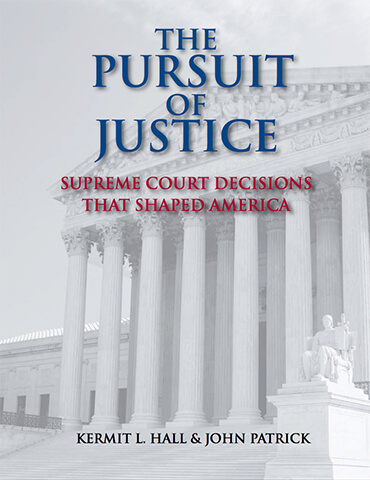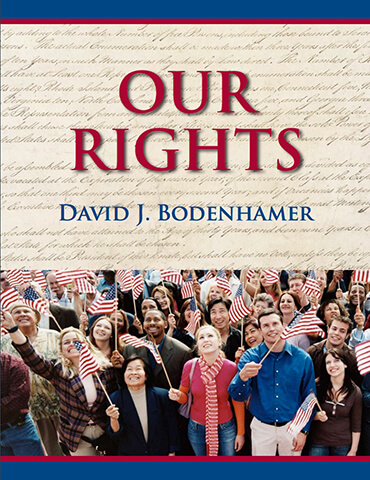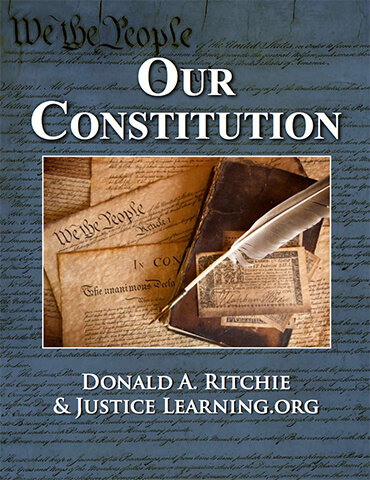A Nation at war with a formidable enemy is a nation at risk. National security becomes a paramount concern of the government, which may, under certain conditions, decide to subordinate the constitutional rights of some individuals to the collective safety of the people.
In Korematsu v. United States, the U.S. Supreme Court finds post-Pearl Harbor restrictive measures, including internment camps, to be constitutional. The Court upholds the conviction of Fred Korematsu, a Japanese American citizen who refused to comply with a relocation order. The Court says compulsory exclusion is justified in times of “emergency and peril.” Justice Frank
Citing national security, President Franklin D. Roosevelt issues two executive orders (quickly passed into law by Congress) that authorize the internment of people of Japanese descent, including many U.S. citizens. One order designates “military areas” across eight states from the Canadian to the Mexican borders in which they are not allowed to live. The other
President Ronald Reagan signs the Civil Liberties Act, which authorizes reparations of $20,000 each and a letter of apology to surviving Japanese Americans who were forced into internment camps after the Japanese attacked Pearl Harbor during World War II.
This annotated list provides citations and brief descriptions of important Supreme Court decisions, presented in an A–Z format. Most of the cases are related in some way to the topics and cases treated in the chapters of this book. In addition, this list includes every case—except those already emphasized in the chapters— mentioned in the social studies standards of the state departments of education throughout the United States.
Brown v. Board of Education was the Court’s greatest twentieth-century decision, a pivotal case that separated one era from another and that permanently reshaped the debate about race and American society.
After the attack on Pearl Harbor, the U.S. government sent people of Japanese ancestry to internment camps. The U.S. Supreme Court upheld the government’s right to restrict the liberty of these citizens and noncitizens in two cases: Korematsu v. U.S. and Hirabayashi v. U.S.
The refusal to grant habeas corpus was a grievance during the decades before independence, so the revolutionary generation wrote guarantees of the right into both state and federal constitutions.
The pivotal Supreme Court cases described in this book remind us that our constitutional system places change and continuity in constant tension. And that is just what the framers of the Constitution intended.
During a national crisis, such as the Civil War, there is inevitably severe tension between these two imperatives of constitutional government: maintaining both the security of the nation and the security of civil liberties for every individual within the nation.
At a summit of world leaders in 2006, the chancellor of Austria noted that the United States historically had led the world in advancing “democracy, liberty, and individual rights.” The remark was so widely accepted that it was a commonplace and quickly forgotten. In fact, the ordinary acceptance of the comment is what should draw our attention.
Essential Question: Should the executive branch have the authority to deny individual rights and liberties during times of war, even if it is done in a discriminatory way?
In an early morning air raid, Japanese planes attack the U.S. military base at Pearl Harbor, Hawaii, killing more than 2,000 Americans. The next day, President Franklin D. Roosevelt will deliver a speech to Congress seeking a declaration of war. The speech begins: “Yesterday, December 7, 1941 – a date which will live in infamy
Surveys show that alarming numbers of Americans are unaware of the full extent of their constitutional rights. Some people readily admit that they do not know what rights are included in the Constitution and its first ten amendments, the Bill of Rights. Other Americans have expressed the opinion that the Constitution went too far in granting such rights as free speech and free press and that society should be able to restrict opinions and behavior with which the majority disapproves.
Rights are expressions of individual liberty. The history of America is, on the whole, a story of individual liberty and rights. In 1776, the signers of the Declaration of Independence boldly proclaimed their belief in the right of equality—“all men are created equal”—and in the inalienable rights of life, liberty, and the pursuit of happiness.
This resource provides a bibliography for those interested in learning more about individual and collective rights in the United States.
Critical Thinking
This lesson examines the ways in which terms that pack an emotional punch can add power to a statement – and also ways in which emotive meanings can be used to mislead, either by doing the reader’s thinking for him or by blinding her to the real nature of the issue.


